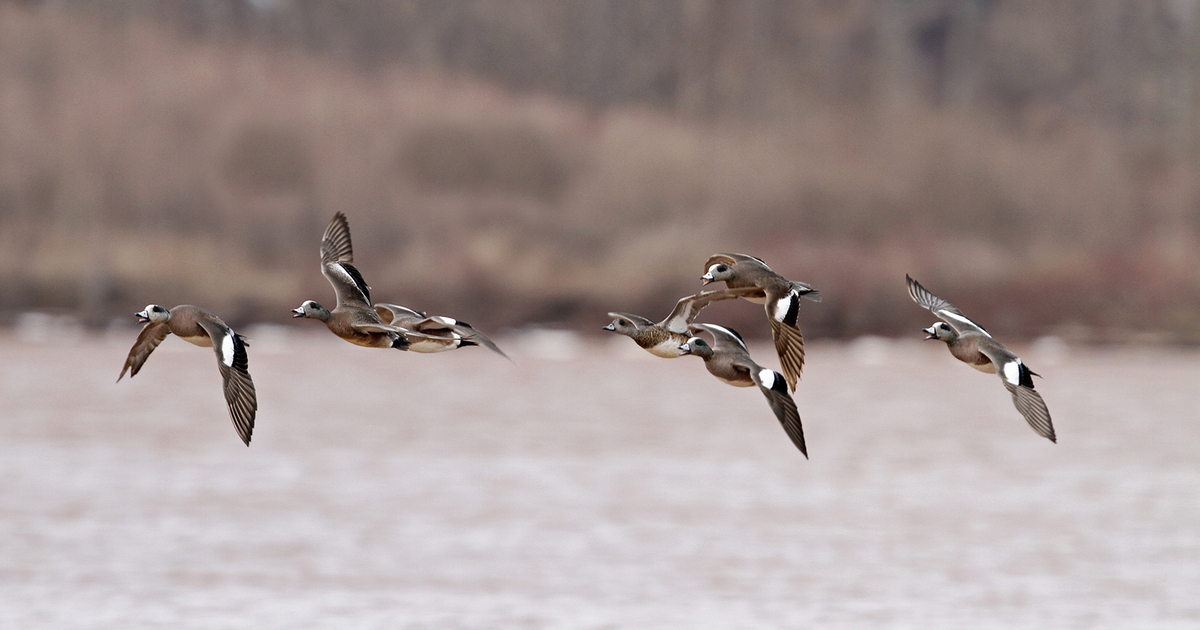Migration Alert: Washington State Boasts Strong Duck Numbers
Dec. 20, 2023 – Pacific Northwest – Washington
Dec. 20, 2023 – Pacific Northwest – Washington

What a difference some rain makes.
After an unusually successful and wigeon-heavy November in southwest Washington, sheetwater from a December drenching have spread ducks far and wide. In addition, many wigeon appear to have pushed south to Oregon and California. The duck straps of successful hunters are beginning to show more greenheads west of the Cascades, especially in north Puget Sound.
"It's mostly mallards now, with a smaller mix of wigeon and pintails," notes Rob Wingard, private lands biologist for the Washington Department of Fish and Wildlife. "After a good shot of rain last week, our fields are starting to look more like mid-season, although it's not super wet. We still need more rain."
Hunting has been good in Whatcom County, he reports, where there's a variety of private and state lands managed for waterfowl.
Skagit County is a bit tougher, Wingard says, after last week's Pineapple Express dumped several inches of rain in the Stillaguamish River Valley.
"There's a lot of water, so the ducks are pretty spread out," he observes.
Snow geese are also numerous on the north sound, but Wingard is puzzled by their patterns.
"We're not seeing them where we usually do," he reports.
Although north Puget Sound typically offers the best hunting opportunities in western Washington, there are birds to be found across most tidal areas on the south sound too. As always, serious scouting becomes more and more important as the season wears on.
Farther south, hunters along the lower Columbia River have noted the departure of many of the wigeon that were very numerous in the area earlier in the season.
"In November, I've never seen that many wigeon down there," declares Dr. Mark Petrie, regional director of conservation and planning in DU's Vancouver office.
Now Petrie reports tougher hunting on the lower river.
Closer to Vancouver, hunters at the Ridgefield National Wildlife Refuge, across the river from the state public hunting grounds on Sauvie Island, are recording close to two birds per gun, a bit behind Sauvie, but about average.
The mix here has also shifted from mainly wigeon to mallards, pintails, and teal.
East of the Cascades, consistently good shooting has been reported in the upper Columbia Basin. Near Othello, Mike Franklin of Pacific Wings Waterfowl Hunting Adventures claims his hunters have been taking an average of six birds per gun, and plenty of ducks and geese remain in the area.
"It's one of the better years I've seen as far as the number of birds in this part of the basin," he reports.
In northeast Washington, hunters have largely turned to hunting rivers for diving ducks.
Kyle Spragens, waterfowl section manager for the Washington Department of Fish and Wildlife, notes an uptick in mallard numbers in the Potholes region.
Snow geese, he reports, are dispersed from Moses Lake south to Tri-Cities.
"They're not in big flocks like before," he observes. "We are also seeing some smaller Canadas and cacklers, mainly lessers and Taverners."
Stay up to date with the latest migration information.